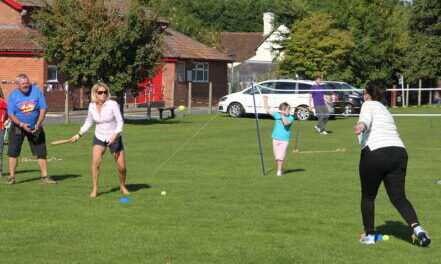
Rounders
An ancient British game called ‘town-ball’, ‘base’ or ‘base-ball’ were the forerunners of the sport of rounders. Indeed, ‘base-ball’ was both included in the first printed children’s book in 1744 and in a Surrey newspaper report of 1749 of such a pursuit in which the then Prince of Wales and Earl of Middlesex played in bad weather for several hours.
Rounders became a staple of school sports from the 1800s onwards, particularly for girls as an alternative to cricket. In 1943 a group of teachers decided it was high time for a standard set of rules to be drawn up for the benefit of county competitions, thereby giving rise to the establishment of the National Rounders Association. International matches began in the mid-1970s for adult devotees.
As a largely recreational game, any number of players can be in each of the two teams, as long as they are equal. Officially the maximum is 15 but only 9 can be fielding (any remaining wait behind the backstop as potential substitutes) and the minimum is 6 to ensure there is a bowler, backstop and sufficient fielders to cover the four ‘posts’ or whatever objects are used to mark the corners of a square around which batters must run.
(Top image: Mike Finn at Flickr.com / CC BY 2.0)
